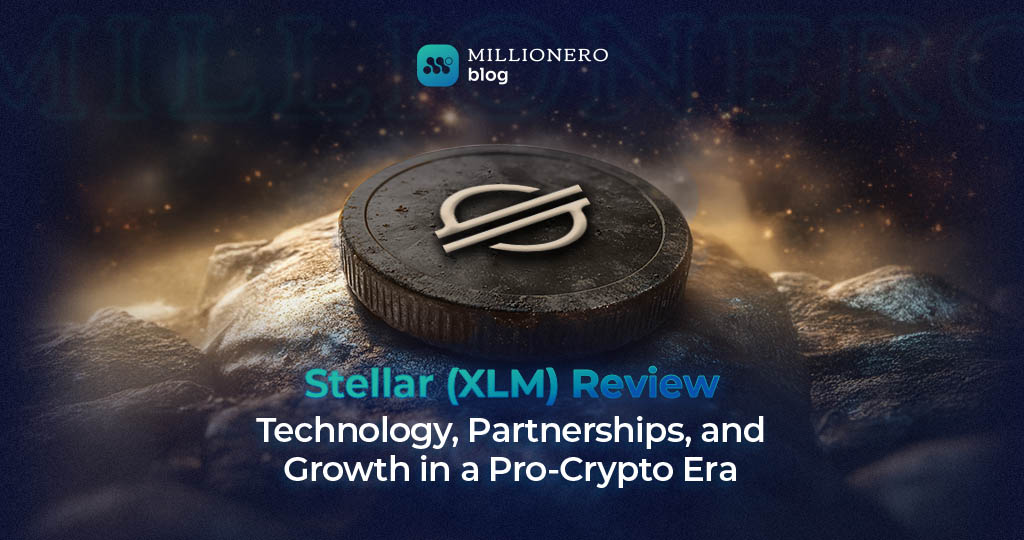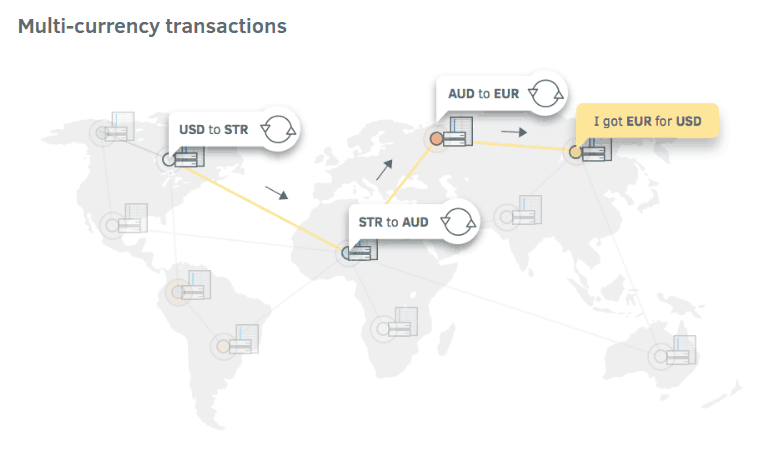
Stellar is a decentralized platform created to make payments and asset exchanges fast, low-cost, and accessible to everyone. It was founded by Jed McCaleb (who also co-founded Ripple) and Joyce Kim in 2014. Stellar uses its own blockchain, which relies on the Stellar Consensus Protocol (SCP) instead of mining. This design helps the network run efficiently, with minimal energy use.
Lumens (XLM)
The Stellar network’s digital currency is called Lumens (XLM).
- Transaction Fees: A very small amount of XLM is needed for each transaction. This fee helps prevent spam on the network.
- Minimum Balance: Each account on Stellar must hold at least 1 XLM. This requirement also helps keep the network secure.
- Bridge Currency: XLM can serve as a “middle step” (bridge) when you convert one currency or asset into another.


Key People and Organization
- Stellar Development Foundation (SDF): The nonprofit that helps grow and develop Stellar.
- Denelle Dixon – CEO and Executive Director of SDF.
- Jed McCaleb – Co-founder of Stellar (formerly at Ripple).
- David Mazières – Chief Scientist, who created the SCP.
- Tomer Weller – CTO at Stellar.
- Headquarters: The Stellar Development Foundation is based in San Francisco, California (USA).


Photo of SDF Team | X @StellarOrg
How XLM Relates to XRP
- Shared History: Both XRP and XLM were partly founded by Jed McCaleb. After differences in vision at Ripple, he started Stellar.
- Similar Goals: XRP and XLM both aim to make cross-border payments faster and cheaper. However, XRP focuses on banks and large financial institutions, while Stellar focuses on individuals, small businesses, and financial inclusion.
- Technology: Ripple uses a more centralized way of confirming transactions, while Stellar uses SCP, which is considered more decentralized.
Important Partnerships and Adoptions
IBM
IBM partnered with Stellar to support cross-border payment solutions, especially in the South Pacific region.
MoneyGram
Works with Circle and Stellar to let users move money in and out of digital wallets using USD Coin (USDC) on Stellar.
Franklin Templeton
Adopted Stellar to power its OnChain U.S. Government Money Fund.
Mastercard
Stellar is integrated into Mastercard’s “Crypto Credential” to streamline and secure digital transactions.
Stripe
Provided early funding for Stellar, indicating potential future integrations.
UNHCR / Stellar Aid Assist
Stellar’s network helped deliver aid in crisis situations (like Ukraine), allowing bulk payments to reach recipients quickly.
Ukrainian Government
Collaborated with Stellar to explore digital infrastructure and a possible central bank digital currency (CBDC) pilot.
Deloitte
Worked with Stellar on blockchain-based payment solutions.
Samsung
Integrated Stellar’s technology via the Samsung Blockchain Keystore.
Tempo
A payment app using Stellar for remittance services.
Abra
A crypto wallet and exchange app that uses Stellar to support its services.
Soroban
Stellar’s smart contract platform, aiming to bring more DeFi (Decentralized Finance) and application development to the network.
Regulatory Environment
Under the current U.S. President Donald Trump, crypto-friendly policies are on the rise. Many members of the new administration are strongly pro-crypto, creating a favorable climate for blockchain projects like XLM and XRP. When US President Trump took office, Gary Gensler resigned from the SEC, which abruptly ended the SEC’s long legal conflict with Ripple (XRP).
This outcome gave XRP more room to expand among banks and big financial players. As a result, overall interest in crypto payment solutions has grown. Some of XRP’s success may spill over to Stellar (XLM), since both networks focus on fast, low-cost transactions. While Stellar and Ripple have different user bases and technology approaches, a pro-crypto government can bring more attention to both projects.
For the next four years, because of this supportive environment, many people expect higher adoption of crypto-based solutions. Stellar, with its focus on financial inclusion and decentralized operations, may benefit from new partnerships, regulatory clarity, and public awareness.
Main Use Cases and Advantages
Cross-Border Payments
Stellar’s low fees and quick settlement are great for sending money across borders, even for small amounts.
Financial Inclusion
The network is designed to serve people without easy access to traditional banks, especially in developing countries.
Asset Tokenization
Companies can create “tokens” on Stellar to represent currencies, commodities, or other assets for easier global trading.
Decentralized Exchange (DEX)
Built directly into Stellar’s network so users can trade assets without a separate platform.


Source | Blokt
Market Sentiment
Growing Ecosystem
Social media posts show optimism about Stellar’s expanding partnerships and real-world use cases.
Independent Growth
Despite similarities to XRP, Stellar is driven by its own foundation, technology, and set of partners.
Positive Political Climate
With pro-crypto policies, Stellar could see increased attention in cross-border finance and humanitarian solutions.
Conclusion
Stellar (XLM) stands out for speed, low transaction fees, and a focus on financial inclusion. Led by the Stellar Development Foundation, it partners with major organizations like IBM and MoneyGram. Although XRP’s legal resolution has grabbed headlines, Stellar also benefits from the pro-crypto environment under President Trump and a more open attitude toward blockchain solutions. With its decentralized nature and strong mission, Stellar continues to grow through new partnerships, humanitarian programs, and upcoming technologies like Soroban.
This article is not financial advice. Always DYOR (Do Your Own Research) before making any investment decisions. You can also DYOR by checking out more insights on blog.millionero.com. When you’re done, you can come trade spot and futures on Millionero.

